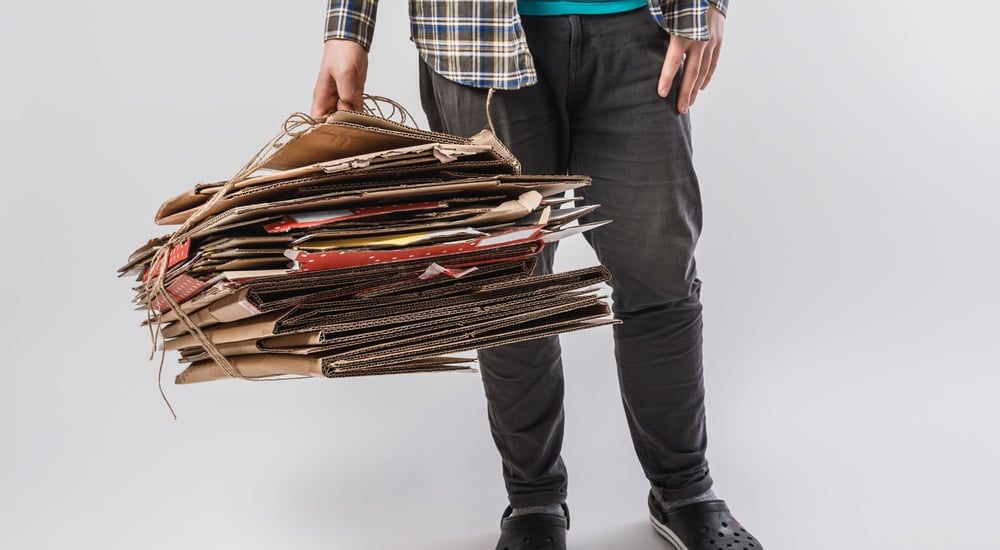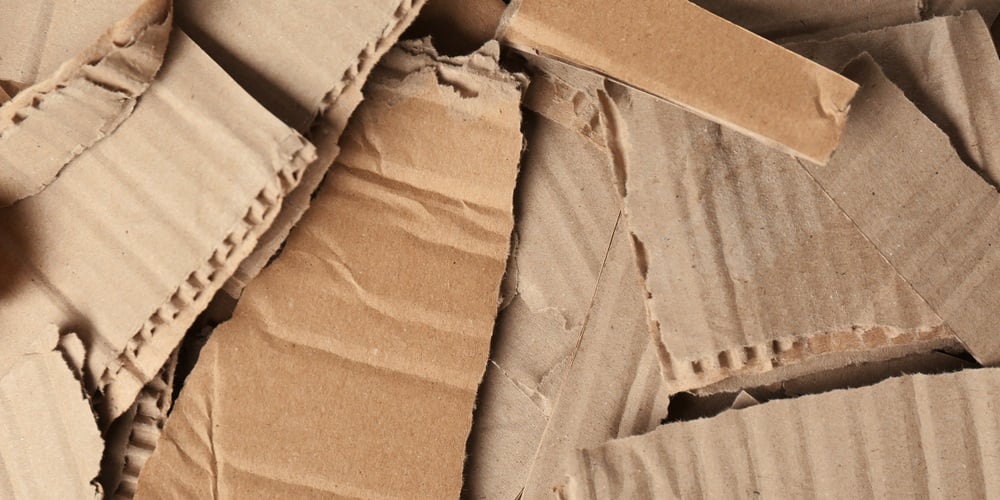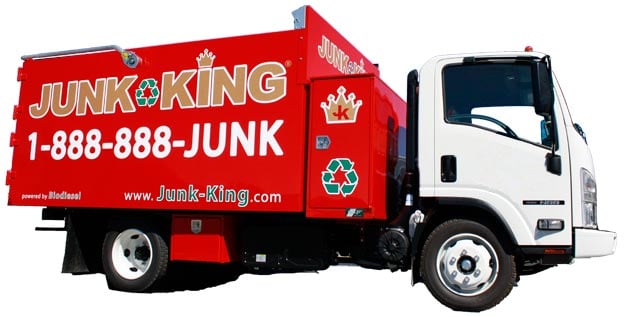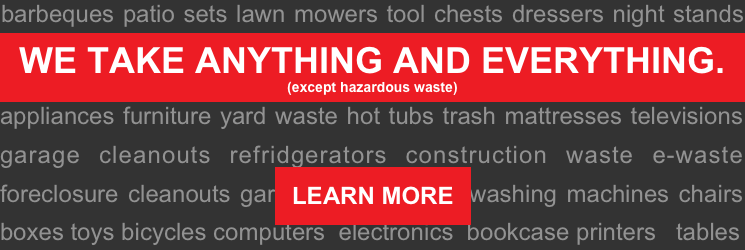
[This article was originally published in August 2020 and has been revised and expanded.]
Almost everything we buy comes in some kind of cardboard package. And that means quite a bit of cardboard recycling that has to be done. But how to do it?
The problem is that we often think it's just a simple matter of throwing used boxes and packages into our paper recycling bin. But there's much more to it than that.
Is Cardboard Recycling Really That Complicated?
The short answer is, "No."
But there is more to it than most folks realize. And this matters because cardboard has the highest recycled recovery rate of almost any material we throw out.
The American Forest & Paper Association says that Old Corrugated Cardboard/Containers (OCC), the recycling industry term for used corrugated cardboard, had a recovery rate of 96.4 percent in 2018, the highest recycling rate of all paper products.
Also, according to Earth911,
- Over half of the cardboard collected is used to make new cardboard boxes
- Additional cardboard can be downcycled into paperboard (used for cereal boxes) or chipboard (used for shoeboxes)
- Making 1 ton of virgin cardboard requires 3 tons of trees
- Recycling 1 ton of cardboard eliminates 9 cubic yards of landfill space
Most forms of cardboard are recyclable and there are two primary types of cardboard: corrugated cardboard and paperboard.
Corrugated cardboard is thick cardboard with an extra layer of wavy fiber in between sheets. The extra layer makes it stronger and a great option for shipping or packing boxes. Paperboard, or chipboard, is used for cereal boxes, dry packaged food boxes and cases for soda and alcoholic beverages.
As one source notes, more than 90 percent of products in the United States are shipped in corrugated cardboard boxes. This type of cardboard can actually be recycled up to seven times, making it an ideal reusable choice for a variety of uses.
And about 70 percent of cardboard-boxes shipped commercially are recovered for recycling.
Some cardboard is not recyclable, however. According to a post at PublicGoods.com,
"It’s important to note that not all cardboard can be recycled. While they are recyclable in theory, used pizza boxes with oil stains or food remnants should not be thrown into the recycling bin. The same goes for boxes that have been soaked with chemicals from cleaning supplies or other household products.
Why? Because these substances can contaminate the cardboard and compromise the recycling process, making it harder to separate paper fibers from the oils. Unfortunately, these spoiled paper products belong in the trash (or compost, depending on your home/municipal capabilities)."

How Cardboard Gets Recycled
While not as complex as some other recycling processes, cardboard and paperboard recycling does require specialized facilities with a variety of large pieces of equipment to turn those old boxes into new boxes - as well as other cardboard products.
And not all cardboard types, or grades, are recycled in quite the same way.
For example, as one cardboard manufacturer points out,
"The difference in paperboard and cardboard cartons lies in how they are constructed. Paperboard is thicker than average paper, but it is still just one layer. Cardboard is three layers of heavy paper, two flat with a wavy one in the middle. Because they have different layers of paper and different weights, these two products cannot be recycled together or in the same way."
You can watch a great video of cardboard recycling in action here:
So, how does it get recycled?
First, the cardboard must be separated from other paper products. After the cardboard is separated, it is baled and sent to a mill, where it’s shredded into small pieces. A pulping machine uses water and chemicals to soften and break down the cardboard into fibers. At this stage, any ink and tape gets filtered out and the paper fibers bond together.
Before it can be manufactured into new cardboard products, this paper fiber pulp is mixed with water once again, and then stirred and pressed to the right consistency.
After mixing, the reconstituted fibers are rolled and dried out to create large reels of brown paper that can then become the raw material to create new products. Some of the material is layered to make thicker cardboard, while the rest is downcycled into other paper products.
Waste Management (WM) describes the corrugated cardboard recycling process this way:
- The cardboard is re-pulped and the fibers are separated and bleached. This is a chemical process involving hydrogen peroxide, sodium silicate, and sodium hydroxide.
- The fibers are screened and cleaned to eliminate contaminants.
- The fibers are washed to remove leftover ink.
- Fibers are pressed and rolled into paper.
- The rolls of paper are then converted into boxes or made into new products.
However, before your old cardboard ever gets to the recycling facility, it has to be properly disposed of for recycling.
We created this illustrated checklist to serve as a quick guide for proper cardboard recycling disposal:

Share this Image On Your Site
Alternative Cardboard Recycling Methods
"Thanks to my mother, not a single cardboard box has found its way back into society. We receive gifts in boxes from stores that went out of business twenty years ago."
~ Erma Bombeck
In addition to putting cardboard in your recycling bin, or bringing them to a local recycling facility, there are many other ways to reuse cardboard.
If you have a garden, shredded cardboard can be added to your compost pile. Be sure the cardboard hasn’t come into direct contact with inedible substances like cleaning or bathing supplies, and make sure that no packing materials end up going in with the cardboard.
You’ll also want to remove any tape, stickers and other adhesives. The good news is that both dry and wet cardboard can be composted. For more composting tips you can go here.
Reusing cardboard materials is also a great alternative to getting rid of them.
Boxes in good condition can be refurbished into storage or moving boxes. If you don’t need them for yourself, perhaps you know someone who does. Don’t forget your kid’s school, thrift stores, or your local community center to see if they could make use of good cardboard boxes.
If you’ve already broken down your cardboard boxes, however, they can still be reused.
Here’s a few ideas:
- Use under appliances when you move them for cleaning
- Use them for drip guards when painting or remodeling
- Cut and tape them to make custom shipping boxes
- Place them under vehicles to capture oil drips
Your Best Choice for Large Recycling and Junk Removal
One benefit of having a professional firm pick up your household recycling and other trash is that you won't have it taking up space. Typically, you can have it taken away that day or the next day.
Junk King is proud to be North America’s greenest residential junk removal service.
We pioneered recycling-based junk removal in 2005 and have been going greener ever since. We sort each and every job for metals, e-waste, paper, household goods, textiles, furniture and appliances, in our recycling warehouses.
But “going green” also means we donate, repurpose, and reuse everything from clothing, toys, baby cribs and strollers to office furniture and supplies.
And we run many of our trucks run on biodiesel, a domestically produced fuel made from more environmentally safe non-petroleum, renewable resources. Junk King is committed to continuing to lead the way to help keep our planet clean, green and beautiful for the generations to come.
Our team specializes in trash and junk removal and we can usually be at your home in mere minutes, so call us today! Our crew is fully insured and well-trained, so you can trust them to get rid of your unwanted items in a professional and courteous fashion.
So, ready to get rid of your bulk cardboard recycling waste? It's as easy as 1,2,3.
If you have questions about what we do or what we believe, give us a call at 1-888-888-JUNK (5865).




